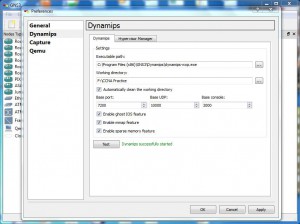Save Memory and Processing with Sparse Memory Feature in GNS3
While preparing for Cisco certification there might be times when students want to use identical devices to practice. As far as physical routers are concerned every router has its own separate memory and therefore in that kind of scenario everything goes smooth. However when the same topology is configured in GNS3 the entire workload of all the routers is transferred to the shared hardware resources of physical computer. This remarkably reduces the performance of the computer even if Idle PC value is calculated and configured. GNS3 provides a great feature named Sparse Memory which when enabled saves only a single instance of an IOS image in the memory even when multiple identical devices are used in the topology. In other words if Sparse Memory feature is not enabled and a user places two 3640 virtual routers two copies of the IOS images will be used and will consume extra processing and memory. On the contrary if the above feature is enabled only one copy of IOS image will be used for all the instances of virtual devices. If you want to enable Sparse Memory feature in GNS3 you need to follow the steps given below:
-
Logon to the Windows computer with the account that has administrative privileges.
-
Double click on the icon of GNS3 to open its console window and from Edit menu go to Preferences option.
-
On the opened box from the left pane select Dynamips and from the right pane check Enable sparse memory feature checkbox to enable above mentioned feature.
-
Once done click on Ok button to make the changes persistent.
Previous: Rename VPCS Simulated Computers
Next: YouTube AdsFree
